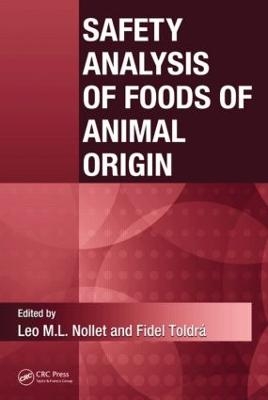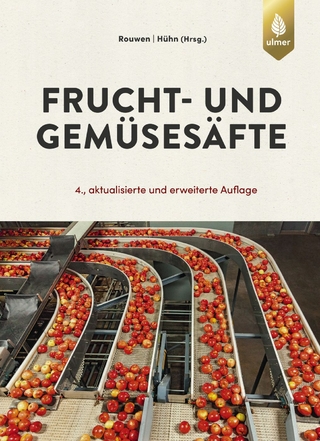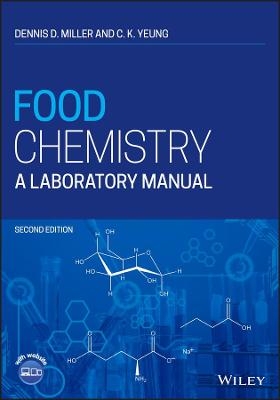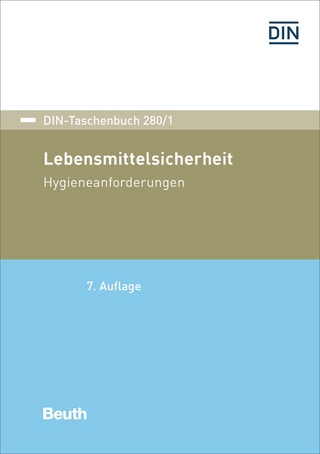
Safety Analysis of Foods of Animal Origin
Crc Press Inc (Verlag)
978-1-4398-4817-3 (ISBN)
We cannot control how every chef, packer, and food handler might safeguard or compromise the purity of our food, but thanks to the tools developed through physics and nanotech and the scientific rigor of modern chemistry, food industry and government safety regulators should never need to plead ignorance when it comes to safety assurance.
Compiled by two of the most esteemed researchers in the food science industry, Leo M.L. Nollet and Fidel Toldrá (most recently 2010 American Meat Science Association Distinguished Research Award recipient), Safety Analysis of Foods of Animal Origin sets such a new and complete standard for testing quality, that to use another resource could be considered irresponsible. Bringing together more than 70 of the most respected investigators from across the world, this invaluable resource —
Covers all relevant biological and environmental contaminants
Details methods to protect foods from bacteria, viruses, or parasites
Considers all sources of contamination along the supply chain including veterinary drugs, irradiation, and genetic modification
Looks at ways to detect especially pernicious threats, including metals, dioxins, allergens, and foreign proteins
Organized for quick reference, the book is divided into three parts: meat, processed meats, and poultry; fish and seafood products; milk and dairy products.
Each of the chapters is dedicated to a specific spoilage, foodborne pathogen, parasite, virus, adulteration, residue, or toxin. Each starts with a discussion of the parameter in question. Sample preparation and cleanup methods are then reviewed in depth, followed by a detailed evaluation of various separation and detection methods. Special attention is given to explain current limits of detection and reliability. Finally, a brief summary covers the presence of these parameters in different end products, regions, and countries.
To keep food safe requires vigilance, not just in the rigor of methods, but also vigilance in terms of keeping informed about current methods.
Only the most recent techniques and related literature are included in this text.
University College Ghent, Applied Engineering Sciences, Belgium University College Ghent, Applied Engineering Sciences, Belgium Instituto de Agroquimica y Technologia de Alimentos (CSIC), Valencia, Spain
MEAT, PROCESS EDMEATS AND POULTRYL: Methods to Predict Spoilage of Muscle Foods. Microbial Foodborne Pathogens. Parasites. Mycotoxin Analysis in Poultry and Processed Meats. Detection of Genetically Modified Organisms in Processed Meats and Poultry. Detection of Adulterations: Addition of Foreign Proteins. Detection of Adulterations: Identification of Animal Species. Detection of Irradiated Ingredients. Growth Promoters. Antibiotic Residues in Muscle Tissues of Edible Animal Products. Determination of Persistent Organic Pollutants in Meat. Biogenic Amines. Nitrosamines. Polycyclic Aromatic Hydrocarbons. FISH AND SEAFOODS: Assessment of Seafood Spoilage and the Microorganisms Involved. Detection of the Principal Foodborne Pathogens in Seafoods and Seafood-Related Environments. Parasites. Techniques of Diagnosis of Fish and Shellfish Virus and Viral Diseases. Marine Toxins. Detection of Adulterations: Addition of Foreign Proteins. Detection of Adulterations: Identification of Seafood Species. Spectrochemical Methods for the Determination of Metals in Seafood. Food Irradiation and Its Detection. Veterinary Drugs. Analysis of Dioxins in Seafood and Seafood Products. Environmental Contaminants. Biogenic Amines in Seafood Products. Detection of GM Ingredients in Fish Feed. MILK AND DAIRY PRODUCTS: Microbial Flora. Spoilage Detection. PCR-Based Methods for Detection of Foodborne Bacterial Pathogens in Dairy Products. Mycotoxins and Toxins. Detection of Adulterations: Addition of Foreign Lipids and Proteins. Detection of Adulterations: Identification of Milk Origin. Analysis of Antibiotics in Milk and Its Products. Chemical Contaminants: Phthalates. Environmental Contaminants. Allergens.
| Erscheint lt. Verlag | 17.9.2010 |
|---|---|
| Zusatzinfo | 93 Tables, black and white; 119 Illustrations, black and white |
| Verlagsort | Bosa Roca |
| Sprache | englisch |
| Maße | 178 x 254 mm |
| Gewicht | 2245 g |
| Themenwelt | Technik ► Lebensmitteltechnologie |
| ISBN-10 | 1-4398-4817-3 / 1439848173 |
| ISBN-13 | 978-1-4398-4817-3 / 9781439848173 |
| Zustand | Neuware |
| Haben Sie eine Frage zum Produkt? |
aus dem Bereich


